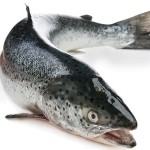
AquaBounty’s experimental production facility of genetically engineered salmon in Panama is missing a number of legally required permits and inspections, including a wastewater discharge permit, says an administrative claim filed today in Panama by the environmental group Centro de Incidencia Ambiental de Panama (CIAM).
Food & Water Watch (FWW), Center for Food Safety (CFS) and Friends of the Earth (FOE) were part of an international coalition of groups who supported CIAM’s administrative claim by submitting a letter to Panamanian authorities, which raises serious questions regarding AquaBounty’s ability to comply with basic environmental regulations.

“These allegations suggest a dangerous pattern of non-compliance and mismanagement by AquaBounty, raising the likelihood of an environmentally damaging escape of these fish,” George Kimbrell, CFS senior attorney, said in a media release. “This news further undermines the empty assurances that AquaBounty and the U.S. Food and Drug Administration (FDA) have given the public and suggests that Panama’s environmental laws may have also been broken.”
The coalition says the FDA is considering commercial approval of AquaBounty’s genetically engineered salmon based on a scenario in which AquaBounty would produce genetically engineered salmon eggs at a facility in Prince Edward Island, Canada. The eggs then would be shipped to the Panama facility to be grown to harvest. Fillets would then be shipped to American consumers. However, significant questions about the viability and legality of this plan continue to emerge.
“FDA’s ineffective and inappropriate regulatory regime has reached its logical conclusion, as it appears that AquaBounty is essentially self-regulating in Panama,” said Wenonah Hauter, FWW executive director. “If and when FDA finally approves genetically engineered salmon and new production facilities open up around the world, we expect this scenario to play out again and again.”
The CIAM complaint comes on the heels of several other reports of major problems at AquaBounty’s Panamanian facility, including the company reporting “lost” genetically engineered salmon, which resulted from the region’s notoriously severe weather. The area around AquaBounty’s facility experiences routine, destructive flooding.
“Once genetically engineered salmon escape, there is no retrieving them,” said Dana Perls, FOE food and technology campaigner. “It’s clear that consumers don’t want genetically engineered salmon, so why are we putting wild salmon and the environment at risk?”
The international coalition supporting this effort includes seven groups from around the world, including CIAM in Panama, Canadian Biotechnology Action Network in Canada, Food & Water Europe and GeneWatch in Europe and CFS, FWW and FOE in the U.S.
Visit EcoWatch’s GMO page for more related news on this topic.


Leave a Reply
You must be logged in to post a comment.